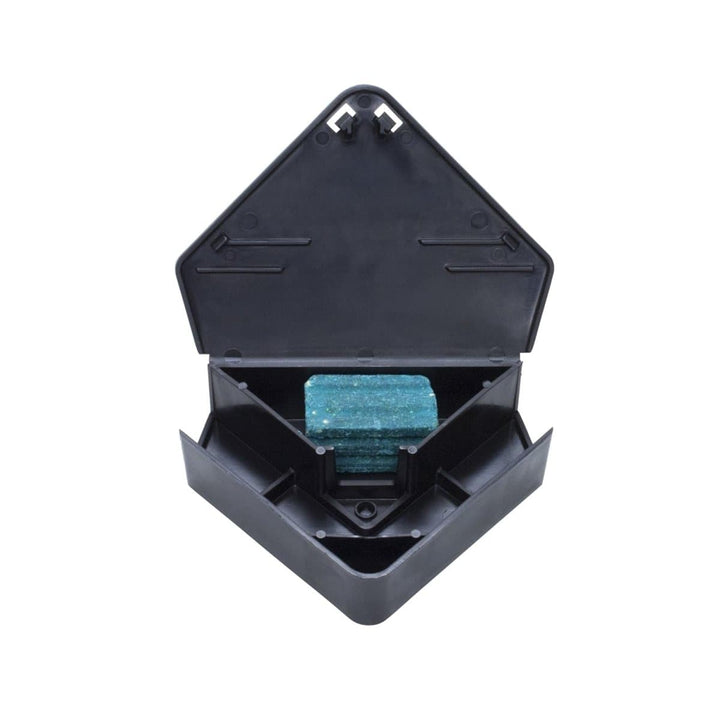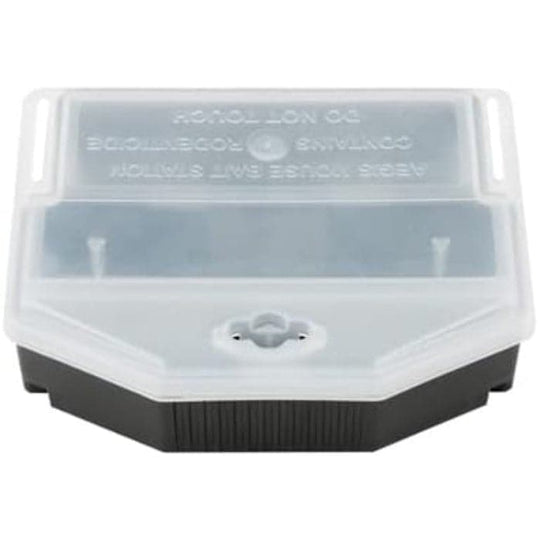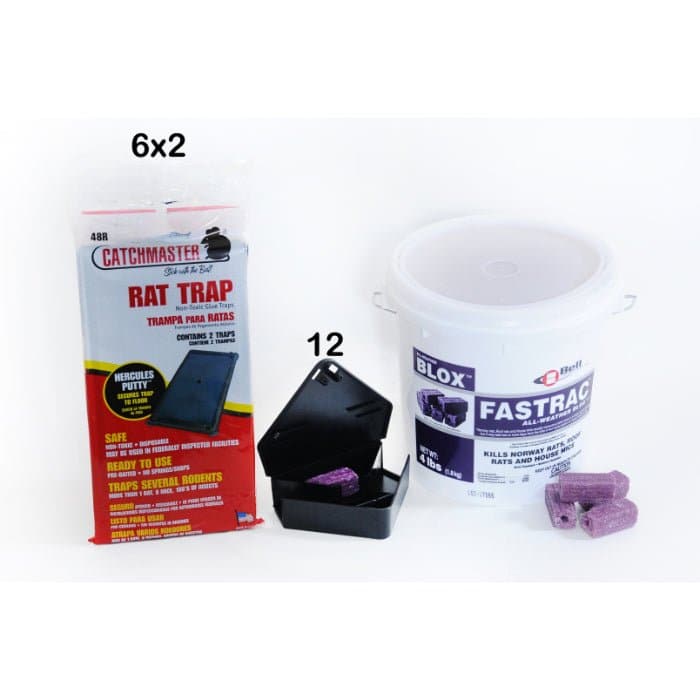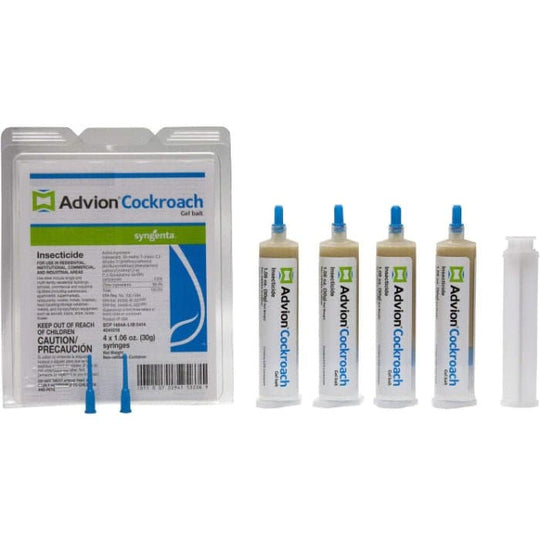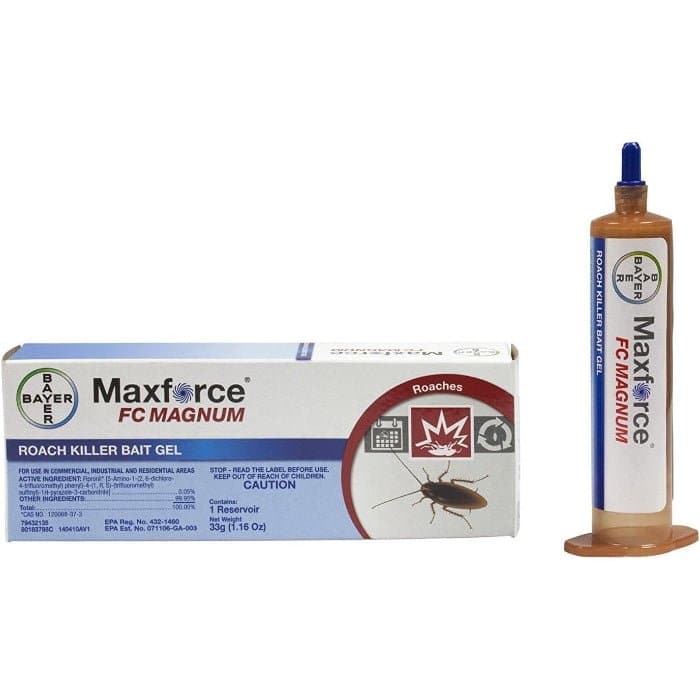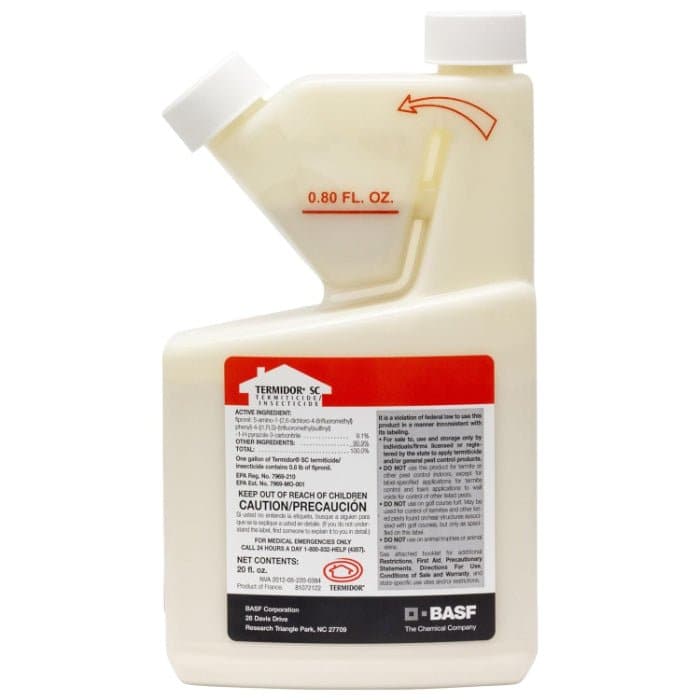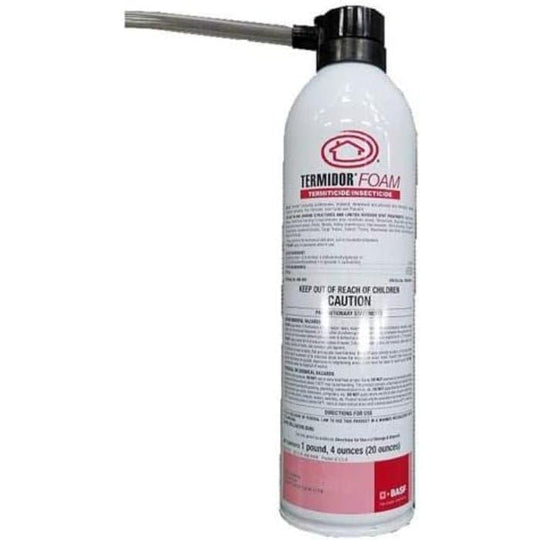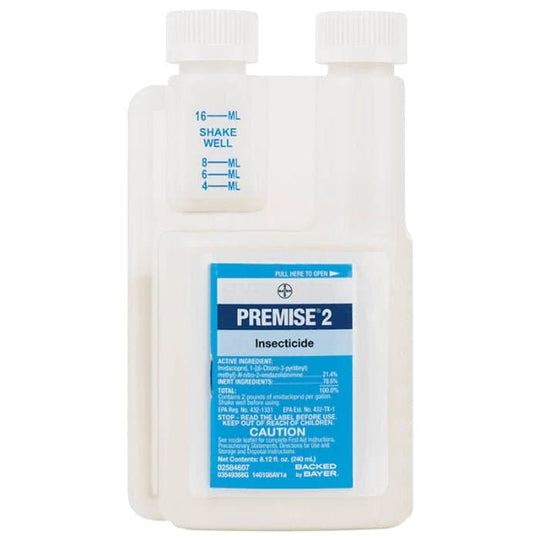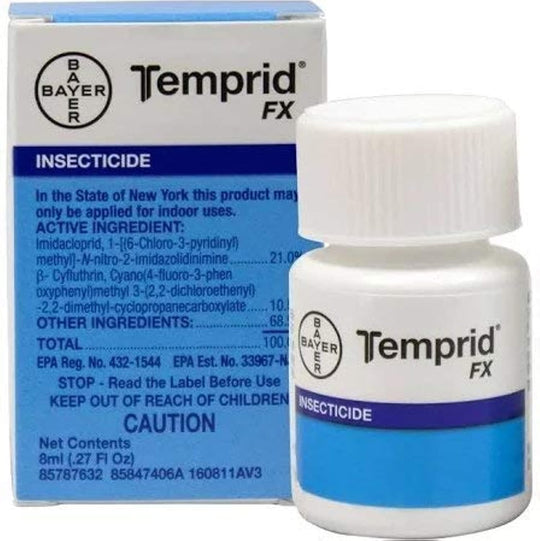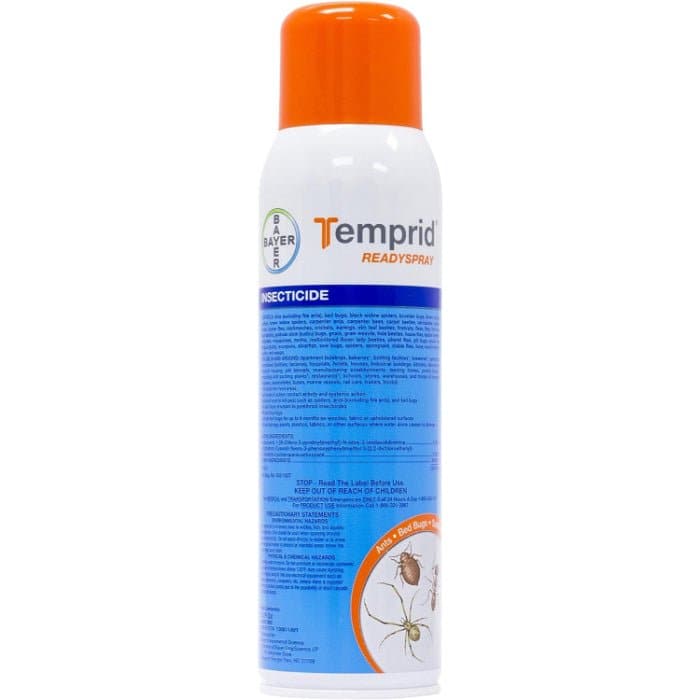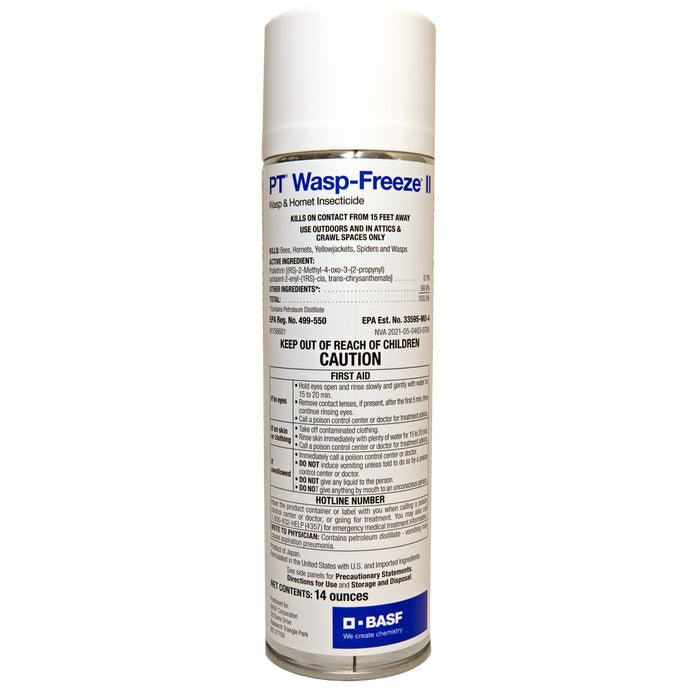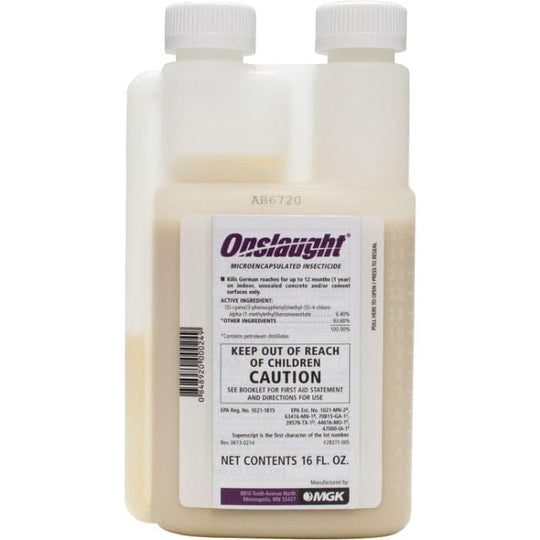Blogs
Many regions' most prevalent household pests are mice, which can get into homes through tiny gaps to find food and shelter. By nibbling through wires, insulation, and walls, they can destroy structures and spread infections and contaminate food. A healthy and safe household requires effective mouse control.
This blog covers everything that’s necessary to get rid of mice. Identification, prevention, and elimination of mice infestations are also explained in this guide. Lastly, check out all the mice prevention products available at Pest Control Products Depot to prevent mouse infestations at all costs!
How to Identify Mouse Infestations?
Confirming mouse existence in your home is the first step. Small, dark mouse droppings along baseboards, in drawers or cabinets, and under sinks indicate an infestation. Gnaw marks on furniture or food packages, scratching noises in walls, especially at night, and a musky smell are all signs. Early detection of these signals can help you locate activity and entry locations before the infestation spreads.
Controlling mice also requires knowledge of their behavior and life cycle. Mice may squeeze through quarter-inch openings to enter dwellings. Within months, a pair can generate a dozen offspring. Climbing, jumping, and fitting through narrow holes make them dangerous invaders that require strategic control.
Preventive Measures for Mice Control
Prevention is frequently the best mouse defense. Start by checking your home's exterior for entryways. To prevent access, fill cracks, holes, and gaps bigger than 1/4 inch with steel wool, caulk, or metal sheeting. Removing bird feeders and sealing garbage can help deter mice from living near your home.
1. Sanitation
Mouse control depends on sanitation. Mice need little food and shelter, so eradicating them can make your home less inviting. Clean up mice-attracting clutter, seal food, and frequently dispose of waste. Clutter removal eliminates nesting opportunities and makes infestation indications easier to notice.
2. Trapping
Indoor mouse control is best achieved by trapping. Many traps are available, including adhesive, snap, and live catch. Snap traps kill mice rapidly, whereas glue traps monitor infestations. Live catch traps are compassionate but require releasing mice far from your home to avoid reentry. Place traps along walls or near known activity with the baited end facing the wall.
3. Using Rodenticides
When non-lethal approaches fail, rodenticides can help. To avoid harming pets and humans, use them carefully. Bait stations prevent non-target species from eating the poison, making them safer than loose bait. Always read labels and place bait stations away from children and pets.
How to Choose the Right Mouse Control Product?
The severity and location of your mouse infestation determine the best mouse control product. Traps and bait stations are safer for children and pets indoors. Weatherproof bait stations work outside. Ultrasonic repellents are another non-lethal method. Choose EPA-approved products for safety and efficacy.
DIY Mouse Control Tips from Pest Control Products Depot
While professional extermination is recommended for large infestations, there are several effective DIY methods you can employ to control minor mouse problems:
Seal Entry Points: Use steel wool and caulk to seal up any cracks or holes in your home's exterior.
Proper Sanitation: Keep your home clean by disposing of garbage regularly and storing food in sealed containers.
SureKill Total Release Aerosol: This aerosol provides immediate, room-wide coverage. Fogging insecticide into roach-hiding gaps and crevices works. It kills roaches quickly, making it ideal for breakouts or severe infestations.
Can Use Natural Repellents: Items like peppermint oil, cloves, and cayenne pepper can deter mice due to their strong scents.
Traps: Various types of traps, such as snap traps and humane traps, can be strategically placed around your home.
Bifen IT: Effective against roaches when applied as a perimeter treatment around access points and nesting places, Bifen IT is adaptable and long-lasting. It is a common indoor and outdoor roach control method.
Ditrac All-Weather Blox: A strong, moisture-resistant rodenticide block that inhibits mice and rats in many situations. These blocks with Brodifacoum offer a deadly dose in one feeding, making them perfect for indoor and outdoor application. They are reliable for rodent control since they are weatherproof and potent.
Catchmaster MaxCatch Giant Glue Boards 24GRB: This enhance catch area and increase rodent and insect capture. Industrial or commercial sites with significant infestations benefit from the Catchmaster MaxCatch. Its powerful glue keeps pests on the board, giving a non-toxic treatment without chemicals or poisons.
Earth Care Odor Remover Bag: Absorbs and neutralizes odor without scents in natural, non-toxic, biodegradable bags. These bags contain a mineral that absorbs pets, rodents, and rotting scents. They work in tight areas like automobiles, closets, and rooms and are safe for children and dogs.
Terad3 Blox: Terad3 Blox kills rats by generating hypercalcemia with the palatability of a quality bait formulation and Vitamin D3. This rodenticide is ideal for natural habitats and residential areas where secondary poisoning of non-target animals is a problem. Terad3 Blox are mold and moisture resistant, making them suited for many climates.
Provoke Professional Gel for Mouse Traps: Mouse traps work better using Provoke Professional Gel, a unique attractant. It smells like mouse chow, making rodents drawn to the trap. Applying this non-toxic gel to any mouse trap speeds up trapping by encouraging faster trap engagement.
Wrapping Up!
Successful mouse control needs identification, prevention, and eradication. Homeowners can avoid mouse problems by knowing mouse behavior, keeping hygienic conditions, sealing entry points, and using traps and rodenticides properly. Mouse-free homes require regular inspections and quick intervention at the first hint of activity. Lastly, visit Pest Control Products Depot to browse all types of pest control options-all at one place!
Roaches – just when you think of this word, it shivers down the spine of people! These are the only pests that have outlived dinosaurs and adapted to practically every ecosystem on Earth. But we know that they are more than simply a nuisance. However, keeping roaches out is not only important but also necessary for health and cleanliness.
Cockroaches carry diseases and can cause asthma and allergies, making control and eradication essential. In this blog, we will cover roach habits, detect infestation indications, and discuss natural and chemical ways to get rid of them in this detailed guide. Check out our DIY cures to expert solutions from Pest Control Products Depot!
Identification of Roach Infestations and Nests
Finding roaches early helps prevent major damage and multiplication. Roaches leave several signs. Roach droppings, which resemble coffee grounds or black pepper, are a common symptom. Hidden in crevices or under furniture are egg casings (oothecae) with numerous eggs. Living roaches are nocturnal, so spotting them during the day may signal a huge infestation. Damage like chewed packaging or food is another sign.
Since roaches love dark, warm, and moist places, homeowners should check them periodically. Regular glue board monitoring traps roaming roaches to assess infestation and guide cockroach control activities.
Behavior and Lifecycle of Cockroaches
Controlling and preventing roach infestations requires understanding their behavior. Roaches like food, water, and shelter, which are abundant in human settings. Their favorites are carbs, sweets, oily cuisine, and meats. Roaches may survive on glue, soap, and toothpaste without nourishment.
Nighttime roaches look for food and water. Due to their fast reproduction, prompt action is crucial. Roaches like warm places like appliances and kitchen cabinets. They live in cracks, fissures, and other tight spaces around homes and buildings because they can flatten their bodies.
Baits, Chemicals, and Pest Control for Roaches
More severe infestations require chemical treatments and baits. Roach baits and gels that lure roaches with poisonous food are excellent cockroach killers. Placing these baits in key spots where roaches are known to visit allows them to transport the poison back to their nests, killing the colony.
Insect growth regulators (IGRs) hinder roaches from maturing and reproducing. On-contact aerosol pesticides kill roaches. Please use these approaches with caution to avoid exposure to pets and humans. They should be part of any roach pest control strategy that requires sanitation and exclusion.
How to Get Rid of Cockroaches with Pest Control Products?
You probably might be wondering - ‘how to get rid of roaches overnight?’ or ‘how to get rid of roaches fast?’. Well, don’t worry anymore! We’ve got the best ways to get rid of roaches, and knowledge about what kills cockroaches. Check out what products from our www.pestcontrolproductsdepot.com kills cockroaches instantly below:
Maxforce FC Magnum: This potent roach killer kills even the most resistant cockroaches with a high Fipronil dosage. Maxforce FC Magnum's lengthy residual effect and bait-sharing domino effect suppress roach populations quickly.
Phantom Termiticide Insecticide: Phantom is a non-repellent insecticide that is undetectable, allowing roaches to travel across treated regions and become carriers, carrying the poison back to their nests. This improves colony control.
SureKill Total Release Aerosol: This aerosol provides immediate, room-wide coverage. Fogging insecticide into roach-hiding gaps and crevices works. It kills roaches quickly, making it ideal for breakouts or severe infestations.
Temprid Ready to Spray: This spray offers fast knockdown and long-term cockroach control with two strong chemicals. For easy application without mixing or measuring, Temprid is ideal.
Advion Cockroach Gel Bait: The high attractant mix of Advion gel bait targets all species of roaches, making it popular. Indoxacarb impairs roach nerve activity, killing them within hours. Its syringe applicator places bait precisely.
Bifen IT: Effective against roaches when applied as a perimeter treatment around access points and nesting places, Bifen IT is adaptable and long-lasting. It is a common indoor and outdoor roach control method.
Prevention & Natural Ways to Get Rid of Roaches
Long-term roach control requires prevention. Caulk seals cracks and crevices to keep bugs out. Fixing faulty pipes and drying under sinks will deter roaches from seeking water. Regular garbage pickup and food sealing are essential. Reducing home clutter reduces roach hiding locations, making them easier to find and cure. Regularly cleaning floors, counters, and beneath appliances removes roach-attracting food and grease. These methods reduce the infestation and prevent subsequent roaches.
DIY Roach Control Tactics – Home Remedies for Roaches Control
Several DIY roach control methods work. Homemade roach traps include petroleum jelly-coated jars containing food. Sugar attracts roaches, while baking soda kills them in this homemade bait. Regularly sprinkling baking soda in roach-prone areas helps control. Boric acid, wheat, and sugar make a strong bait in another DIY method. These natural and homemade treatments can help temporarily, but they work best with other comprehensive cockroach treatment strategies to eliminate roaches.
Wrapping Up!
In the roach war, knowledge and tenacity are key. You may control roaches quickly by understanding their habits and spotting early indicators of an infestation. A holistic approach to prevention, treatment, and maintenance is vital, whether you use natural, DIY, or professional chemicals.
Remember that roaches are best eliminated by making your home hygienic. With the tips in this blog, you may eliminate any roach infestation and keep your home clean, safe, and roach-free. Lastly, check out everything that we offer at Pest Control Products Depot for exclusive deals on pest control.
Pest Control Products Depot presents the complete termite identification and prevention tactics. Termites are "silent destroyers" since they consume wood, flooring, and unseen wallpaper. They cause $5 billion in property damage annually, which residents' insurance rarely covers. Identifying termite activity and preventing infestation can save people from stress and money.
This article covers types of termites, infestation signs, how to inspect them, prevention tactics, and treatment that works. If you own a home or want to preserve your investment, this blog from Pest Control Products Depot will keep your property termite-free! So, without wasting even a second, let’s get started...
The Importance of Correctly Identifying Termites
Effective pest management begins with precise termite identification. Misidentification can waste time and resources and increase termite infestation. Identifying termites from other pests like ants protects your property.
Understanding Types of Termites
Subterranean, drywood, and damp wood termites are the main types. Each type has unique traits and habitats. We’ve covered each one in detail below:
-
Subterranean Termites
To stay hydrated, termites require soil. Their average length is 1/8 inch, and they are light to dark brown. Up to 2 million workers, soldiers, and reproducers are present. These create complex mud tubes to access food above ground and avoid air. They damage homes more than storms and fires, creating mud tubes on walls and hollow timbers.
-
Drywood Termites
Larger than other termites, they need wood moisture to survive. Hardly they have workers; mostly younger termites do everything until they develop. They prefer to nest in moist wood, such as buried wood, decomposing trees, and leaking plumbing. Through decaying and damp, the wood damage by them looks clean & smooth inside like drywood termites.
-
Damp Wood Termites
Larger than other termites, they need wood moisture to survive. Hardly they have workers; mostly younger termites do everything until they develop. They prefer to nest in moist wood, such as buried wood, decomposing trees, and leaking plumbing. Through decaying and damp, the wood damage by them looks clean & smooth inside like drywood termites.
-
Formosan Termites
Formosan termites are larger than many other termite species. They have a yellowish-brown color and can be identified by their oval shape and the presence of a thick waist, straight antennae, and short legs. Signs of infestation include soft wood in the house that sounds hollow when tapped, discarded wings near windows or doors, and mud tubes they build to travel between their colony and food sources.
Termite Inspection Tips
- For Exterior Inspection: Check the foundation for mud tubes, mushy wood, and wood-to-ground contact. Look around windows and doors for termite damage like hollow wood and mud tubes. Leaky roofs and cracked shingles attract damp wood termites.
- For Interior Inspection: Tap walls and ceilings every few inches with a screwdriver. A hollow sound or dull thump may indicate termite damage. Especially inspect wood flooring where it joins walls and where it feels spongy or discolored. Look inside, under, and behind cupboards and pantries for undisturbed wood.
- For Attics & Basement: Inspect rafters, ceiling, and floor joists. Check for termite wings or wood-colored pellets of feces. Check crawl spaces and exposed wood for termites, moisture, and deterioration.
- Frequency of Inspections: Professional termite inspections should be done every two to three years or annually in termite-prone areas. Follow termite treatment or inspection instructions. Pests can be prevented by monitoring. Regular termite inspections and education are needed to prevent and manage infestations.
Termite Prevention & Control
Maintaining an 18-inch space between soil and wood, channeling rainfall away from the foundation using gutters and downspouts, and monitoring and sealing utility line and pipe gaps are preventive measures. Termite management strategies include soil, wood, and bait systems, depending on the type and intensity of the infestation.
Get Termite Control from Pest Control Products Depot
Termites can be undetected but destructive. Mud tubes on external walls, hollow wood, and abandoned wings near windows and doors are signs. Termite swarms, especially surrounding light sources, may indicate infestation. Early intervention and control need prompt awareness of these indicators.
Pest Control Products Depot provides professional termite prevention and control. We provide proactive termite protection with expert advice and top-quality products.
Our Best-Selling Termite Control Products
Check out our top-selling termite baits, liquid termiticides, and wood treatments. Termidor SC, Taurus SC Termiticide, Termidor Foam, Premise Foam Termiticide, Bora-care, Tim-bor Professional are popular because they work and are easy to use, so experts and homeowners can get results.
Final Words
Understanding termite behavior, identification, and prevention helps protect your property. The Pest Control Products Depot guide can help you identify, control, and avoid termites. Early diagnosis, frequent inspections, and quick action help control termites. Act before damage appears.
Being vigilant can save your home from costly and harmful termites. To learn more or browse our termite control products, visit our website or contact our experts. Browse our pesticides from Pest Control Products Depot & protect your home from termites for years!
Bed bugs usually hide in beds, pillow cushions, cracks, walls, etc. They bite at night and disrupt sleep, induce irritation, and can cause infections as well. Chemical pest control works well on these and that’s why they should be preferred to terminate them. In this guide, we will explore different chemicals used, their application methods, and the best products for bed bug control.
Understanding Bed Bug Infestations
Before diving into chemical solutions, it's essential to recognize the resilience of bed bugs. These pests reproduce rapidly, hide in tiny crevices, and are known to develop resistance to certain treatments. This makes tackling an infestation complex process requiring a combination of methods and bed bug control products.
Why Use Chemical Solutions?
Chemical solutions stand out due to their effectiveness in killing both adult bed bugs and their eggs. When used properly, they penetrate deeply into hidden areas where bed bugs thrive, offering long-term relief. However, a successful eradication plan involves using a mix of chemical classes to avoid resistance buildup.
-
The Pyre Group of Compounds
These are the most used and effective bed bug pesticide compounds. Natural pyrethrins come from chrysanthemum flowers, while manufactured pyrethroids do.
These chemicals kill bed bugs by attacking their nerve systems. They may not work as well alone in bed bug-resistant areas.
-
Neonicotinoids
These nicotine-based pesticides are novel. They paralyze and kill bed bugs resistant to pyrethroids by acting on their neurological systems differently.
-
Desiccants
Bed bugs dry and die when desiccants like diatomaceous earth and boric acid remove their waxy protective covering. This approach is physical, not chemical, so bed bugs cannot develop resistance. Desiccants often accompany other treatments.
-
Insect Growth Regulation
TIGRs don't kill bed bugs immediately but disrupt their life cycle. IGRs mimic such kind of hormones that prevent bed bugs from reproducing, reducing the infestation in the long run.
-
Biochemicals
Neem oil is the only EPA-approved bed bug biochemical. It affects bed bugs' life cycle and is eco-friendly, however efficacy may be slower than synthetic poisons.
Best Products for Bed Bug Control
-
Temprid FX: This insecticide kills bed bugs, including resistant forms. It kills pests by disrupting their nerve systems using imidacloprid and beta-cyfluthrin. Quick knockdown and long-lasting control for up to 90 days inside are its strengths. This product is ideal for both emergency and preventive pest management because of its dual-action composition that prevents subsequent infestations for months.

-
Temprid Aerosol: Like its liquid version, Temprid Aerosol is ready-to-use and has the same potent composition. This product is ideal for spot treatments, targeting bed bugs in cracks and crevices for fast and long-lasting control.

-
Cimexa Dust: Silica gel-based desiccant. It dehydrates and kills bed bugs by physically destroying their outer covering. Undisturbed, this dust provides long-term bed bug control in hidden regions for up to 10 years.
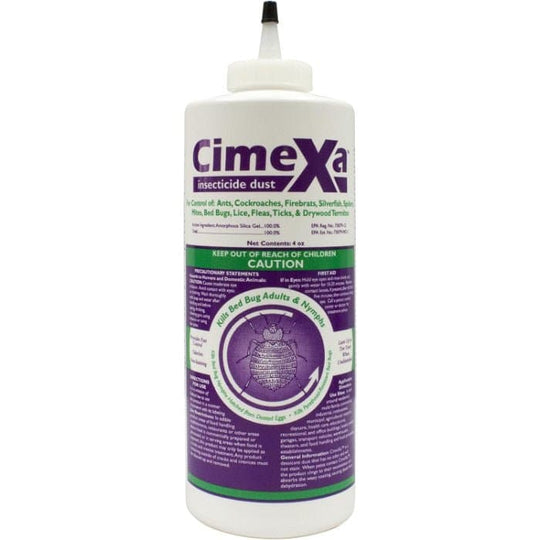
-
Crossfire Bed Bug Concentrate: Bed bug-specific in its targeting of all life stages. It sticks to mattresses and linen without staining or odoring. A dual-action compound effectively reduces bed bug populations and offers residual control for up to 30 days.
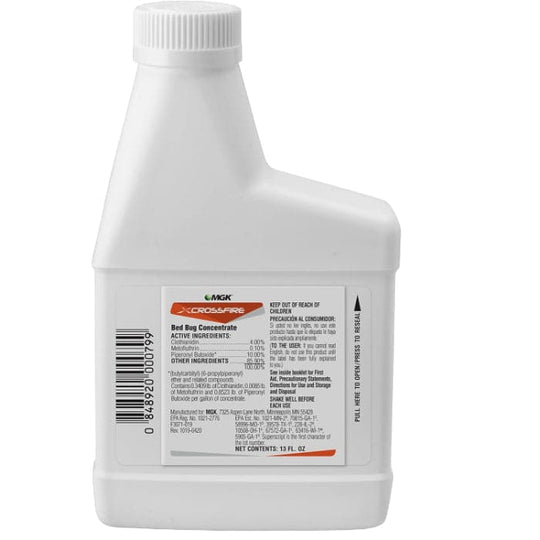
-
Crossfire Aerosol: This aerosol variant of Crossfire is great for quick residential applications and touch-ups. It effectively controls bed bug infestations by targeting both adults and larvae.
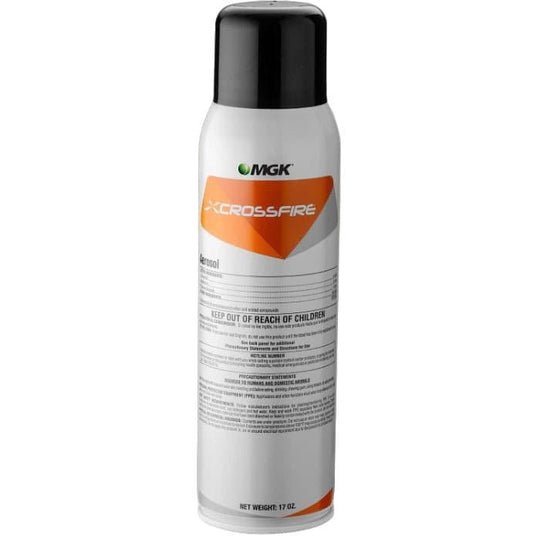
How to Use Chemical Solutions for Maximum Effect?
Preparing Up
Clean thoroughly before using bed bug pest control treatments. Vacuum all bed insect hiding places, wash linen and clothing in hot water, and eliminate clutter.
Targeted Application
Spray mattresses folds, bed frames, and baseboards with bed insect chemicals. Bed bugs hide in gaps and crevices; thus, desiccants should be used. Avoid overuse and health concerns by following product directions.
Follow-Up
A single treatment may not eliminate infestation. Reapply items as instructed since bed bugs hide in hard-to-reach places. Most pest control products for bed bugs offer residual effects, but multiple treatments over several weeks may still be necessary.
Safety Considerations
While chemical solutions are effective, safety should always be a priority. Always read bed bug product labels before using them. Some chemicals can damage humans and pets if misused. Protective protection and proper ventilation are recommended during application. Also, avoid using products in areas not specified, such as food preparation spaces or children’s play areas).
Professional vs. DIY Treatment
Pest Control Products Depot is based on the principle of saving you money. Our average customers easily save up to 70% vs. hiring an exterminator! Our goal is to provide you with the most up-to-date, easy to use pest management solutions on the market that professional pest control companies and exterminators use, but at a fraction of the cost.
Conclusion
Eradicating bed bugs is challenging but achievable with the right chemical solutions. Combining different chemical classes and carefully following application instructions will significantly increase the chances of success. Choose DIY bed bug pest control products for consistency and thoroughness are key.
Make sure to choose products that have proven effectiveness, such as Temprid FX Insecticide, Temprid Ready spray, cimexa Dust Insecticide, crossfire Bedbug Concentrates, Crossfire aerosol and be prepared for multiple treatments to achieve permanent results. For more information on top-rated bed bug control products, check out the range of options available at www.pestcontrolproductsdepot.com
Wasps & hornets like proteins and carbohydrates. So have a look at outdoor eating areas and rubbish bins, these are good targets. Covering food and shutting trash cans decreases them. These are aggressive and difficult to control. Summer brings more stinging insects, so early control infestations to protect outdoor spaces.
Pest Control Products Depot will discuss practical wasp, hornet, and yellow jacket control methods in this article. We'll also discuss finding nests, choosing the best treatment measures (natural or chemical), and carefully removing these pests from your home. So, let’s get started →
Detecting Wasp and Hornet Infestation
To easily detect an infestation, first you need to inspect the type of species. While commonly classed together due to their stinging capacity, wasps, hornets, and yellow jackets have diverse habits. How to tell them apart and spot infestation:
Wasps
Small wasps fly with long legs and a restricted waist. Some reddish-brown to dark brown and black species feature golden markings. These wasps build umbrella-shaped open-comb nests on tree branches, eaves, and other overhangs. Infestations are indicated by aerial nests and wasp activity. These are also called paper wasps. Paper wasps are less aggressive than yellow jackets or hornets but will attack if their nest is disturbed.
Hornets
They are also known as bald faced hornets. Bald-faced hornets, which are a type of yellow jacket, are larger than other wasps and white and black. Their huge, gray, papery football or teardrop nests are hung from trees or buildings. Hornets defend their nests against invaders. The nest's size, position, and hornets' defensiveness make an infestation obvious.
Yellow Jackets
Abdominal stripes of bright yellow and black distinguish sturdy yellow jackets. Hornets' nest in the air, but most nest on the ground. Ancient rat burrows and wall cavities hide yellow jacket nests. Late summer and fall, when numbers rise and food is scarce, they scavenge at picnics, garbage cans, and outdoor food gatherings, creating a nuisance. Infestation is indicated by yellow jackets flying low to the ground and entering and exiting small holes or other dark openings, aggressive behavior around food sources, and increased activity near trash storage.
Identification Tactics
To identify your infestation, investigate the insects' morphological traits, nest types, and behaviors:
- Location & Structure: Paper wasps create open nests, hornets build big, enclosed nests, and yellow jackets nest largely on the ground but may have aerial nests.
- Behavior: Paper wasps are less aggressive than hornets and yellow jackets near their nests.
- Appearance: Wasps have longer bodies and legs, hornets are larger and white and black, and yellow jackets are hefty with striking yellow and black stripes.
Understanding these variations helps choose the right pest control strategy for safety, efficacy, and management.
Seasonal Behavior of Wasps, Hornets, and Yellow Jackets
Understand these stinging insects' seasonal patterns to control them. In April, wasps, hornets, and yellow jacket queens build discreet colonies.
Summer brings all three bug species to life and growth. Wasps and hornets fly to locate food as their colonies increase. Later in summer, yellow jackets are more noticeable as they search for food.
Fall brings aggressive bugs. When food is scarce, they engage more with humans since they like food and sweets. Wasp and hornet nests are larger, making them easier to see but more dangerous to touch.
The colonies diminish in winter. Wasp and hornet queens hibernate after mating as the colony dies. Learning these trends helps plan pest management and eradication before problems arise.
Common Habitats & Nesting Preferences
Eaves, overhangs, and tree branches are ideal nesting sites for wasps and paper wasps. Wasps chew wood and saliva to make these paper-mache nests, which are open and visible.
Hornets, notably bald-faced hornets, create enormous, enclosed nests on trees, bushes, and structures. These paper-like nests may house hundreds of people and are stronger than paper wasp nests.
Yellow Jackets nest in abandoned burrows, attics, and wall voids. Not seeing their nests until you're close to the entrance makes unintentional disturbance risky.
Pest control varies by species since nesting preferences depend on environmental cues and materials. Effective control requires identifying these habitats for targeted treatments and sting reduction.
Buy Supplies for Wasp Control from Pest Control Products Depot
Managing wasp populations around your house or company requires the correct equipment and supplies. We provide a wide choice of wasp control products at Pest Control Products Depot to keep your home safe and comfortable. Examples of our inventory's vital products:
- Wasp Sprays:Our aerosol sprays kill wasps on contact safely and effectively. These chemicals are great for treating wasps under eaves or in trees. Choose long-range sprays to stay away while treating the area.
- Long-lasting insecticide dust is ideal for nest treatment. These products can be applied to wasp nests or regions. Dust is very effective since they stick to wasps and enter the nest, harming the entire colony.
- Wasp Traps:We sell traps to keep wasps out of outdoor spaces. Wasps are trapped by these traps' attractants. Without sprays, this strategy is a great way to control wasps around your property.
- Wasp Safety:Protective gear is essential. We offer suits, gloves, and face shields to protect you against stings while treating.
Purchase PT Wasp Freeze II Aerosol, Onslaught Fastcap Spider and Scorpion Insecticide Bifen I/T, Temp 1% dust Insecticide and other wasp control chemicals from Pest Control Products Depot. We provide high-quality, effective, and trustworthy professional items. Each product has thorough instructions to help you confidently control wasps!
Final Words
Getting rid of wasps, hornets, and yellow jackets requires a lot on its plate. Professional-grade products from Pest Control Products Depot solve these problems safely and effectively. Keep your outdoor spaces safe and pleasurable with aerosol sprays for fast knockdown, baiting systems for colony management, and natural repellents for chemical-free control.
Effective pest control involves removal, prevention, and monitoring. Being alert and prepared helps protect your environment from harmful insects. Visit Pest Control Products Depot to read about our products and get help restoring your peace of mind from these pests.
Are you welcoming fall with spiders? It is common to notice more spiders in your properties during fall as the temperatures starts dropping down.
Fall is peak mating season for Spiders. Spiders that had hatched in spring have gown during summer and are looking for a partner to mate in fall to lay eggs before winter.
September and October is peak Spider season in USA. Spider’s start invading your homes in search of food and shelter to lay their eggs, spiders that are on webs are usually female spiders and spiders that you see crawling around are male spiders that are in search of female spiders.
Spiders feed on other small insects, so if you have spiders inside your property, it means you also have other pests in your house and you need to find a solution that would control these crawling pests.
At pest control products depot we recommend DIY pest control using an insecticide dust in such situation. When applied correctly following the label, Insecticide dust is often the most effective choice for providing superior control of a broad range of crawling insects. Dusting is economical and provides excellent penetration into hard-to-reach areas, fast knockdown and long-term results.
Drione Dust Insecticide manufactured by Bayer is labeled as Insecticide dust ready-to-use formulation. It consists an active ingredient combined with a finely ground, dry carrier. The particle size in each Bayer dust insecticide is scientifically engineered for ease of application, coverage of treated surfaces, and optimum absorption by crawling pests.
Drione is a desiccant dust approved for use in residences, commercial accounts, food plants and granaries. It provides fast control of ants, cockroaches, spiders and other pests, and will remain effective for up to six months when left undisturbed.
Drione features natural pyrethrum plus amorphous silica gel that is produced from sand and erodes the insect cuticle, causing the pest to die from dehydration.
Drione is an excellent flushing tool that is ideal for pinpointing infestations in hard-to-reach areas. It comes with a cap that also acts as an applicator, simply apply the dust into cracks, crevices and voids where pests may hide.
Any pests that are present will run from the treated area, but they won’t get far due to Drione’s fast knockdown. And with Drione’s long residual, pests will not be able to re-infest the treated area for up to six months, saving you time on future visits.
Cold weather will bring pests indoors. During fall and winter, rodent infestations are very common in the United States.
Rodents are known to spread many diseases such as salmonella and Hantavirus. They can reproduce fast, invading your homes and businesses. They can cause severe damage to your property and even be a potential fire hazard as they can chew electric wires.
If you can identify rodents and find their location sooner rather than later, you can treat them efficiently yourself. #DIYPESTCONTROL
Common Rodents you may come across are:
- Roof Rats: Roof rats are black to brown, they like nesting in trees and upper portion of buildings like ceilings. They are about 7 inches in size.
- House mice: House mice are grey in color and they like to nest in cluttered areas like garages, behind appliances, closets and attics. They are about 4 inches in size.
- Norway Rats: Norway rats are greyish brown in color and they like nesting in borrows and lower portion of building likes basement, sewers. They are about 10 inches in size.
Foul smell, droppings, strange noises, trails of footprints and gnaw marks are main indications you may have Rodents inside your property. Rodents only travel about 25 feet away from their nest. Try finding the nest by inspecting for these signs inside your house.
To help protect against threats from Rodents, NPMA recommends the following tips:
- Insert door sweeps and repair damaged screens.
- Screen vents and openings to chimneys.
- Seal cracks and holes on the outside of the home.
- Replace loose mortar and weather stripping.
- Store food in airtight containers and dispose of garbage regularly.
- Keep attics, basements and crawl spaces well-ventilated and dry.
- Repair leaking pipes and clogged drains.
- Inspect all packaging for damage before bringing into the home.
- Store firewood at least 20 feet away from the home.
For Rodent DIYPESTCONTROL during colder months, Pest Control Products Depot recommends:
Catchmaster 48 WRG Cold Temperature Glue Board Trap
Glue board designed to control rodent problems in cold weather. Provides excellent catch ability down to 30 degrees F. Simply place the Trapper Glue Board along a wall or other rodent runway. Rats and mice will run right into it and stick to the thick glue surface
Buy here on Pest Control Products Depot
Glue traps should never be placed in areas where children or pets may come in contact. In the event of child, pet (or adult) becoming affixed to a glue trap, vegetable-cooking oil will separate the glue from the person or pet.
For best results, place Catchmaster 48 WRG Cold Temperature Glue board Trap directly in the rodent's runway between its nest and food supply -- every 8 to 12 feet (2.4 to 3.6m) for mice and 15 to 30 feet (4.5 to 9m) for rats.
With you and your pets enjoying fall season outside and spending more time outdoors, you are more susceptible to Tick bites. Ticks jump on to the host when you brush against a plant they are present in. They are often found in grass or shrubs.
There are many species of ticks but the most dangerous of them all are the Deer Ticks. Deer ticks are also called Black legged Ticks; they are as tiny as a pinhead in size and are found across the United States.
Bite from a Deer tick can cause Lyme disease, Lyme disease cause flu like symptoms and some people also develop a red ring like rash. Lyme disease usually is treated with antibiotics, but some people experience long-term problems with joints, heart, muscles and nerves continuing for months.
CDC says Lyme disease is most frequently reported from the Upper Midwestern and northeastern United States. Some cases are also reported in northern California, Oregon, and Washington. In 2015, 95% of Lyme disease cases were reported from 14 states: Connecticut, Delaware, Maine, Maryland, Massachusetts, Minnesota, New Hampshire, New Jersey, New York, Pennsylvania, Rhode Island, Vermont, Virginia, and Wisconsin.
TICK PREVENTION TIPS:
- Some non-chemical techniques that help reduce tick problems include keeping grass and weed cut sort in tick-infested areas. This discourages alternative hosts, such as rodent.
- Removal of clutter and debris on the property will also discourage rodent populations, as will removal of any nesting material left by rodents.
- Wearing long sleeve shirt, pant and shoes when outdoors or hiking.
- Removal of bird nests in and around structures will reduce the number of ticks, especially of soft ticks.
- Fencing of yard and leash laws prevent dog from staying into tick-infested fields, woods and parks. However, where deer populations are high in urban or suburban areas, populations of the deer ticks that are vectors of Lyme disease are also likely to be high in yards, parks, schoolyards, cemeteries and golf courses and around ponds and along streams.
- Screening and sealing house entry points used by tick hosts, such as squirrels, raccoons, chipmunks and bats will also reduce tick problems in and around the home.
- Sealing cracks and crevices where ticks can hide, both inside and on the exterior of home, will aid in management.
- Regular examination and grooming of pets (especially dogs) and frequent cleaning of their bedding, is also strongly recommended.
- Infested pet bedding should be carefully washed or disposed of. The area around the pet bed should be carefully and thoroughly treated.
- Remove the occasional tick found indoor by vacuuming, seal the vacuum bag and place it in the trash.

Bifen IT is a muliti use insecticide that is very effective and econimical for DIY PEST CONTROL as it not only works on controlling ticks but also 75 other pests.
Bifen IT can be used indoors and outdoors in residential, institutional, public, commercial and Industrial buildings and lawn, ornamentals, parks, recreational areas and athletic fields.
Buy Bifen IT on PCPD: Link here
Are you tired of dealing with pests in your home? Do you want to take control and get rid of them yourself? With a little know-how and the right tools, DIY pest control is possible.
In this guide, we'll cover some simple solutions for common pests that you can do yourself. No need to call in the professionals - you've got this!

Ants
Ants are one of the most common household pests, and they can be quite a nuisance. Here's how to get rid of them:
• Use a mixture of water and dish soap to spray directly on the ants. This will suffocate them and kill them on contact.
• Make a bait using a mixture of borax and sugar. The ants will be attracted to the sugar, but the borax will kill them.
Cockroaches
Cockroaches are another common household pest that can be difficult to get rid of. Here's what you can do:
• Use a mixture of baking soda and sugar as a bait. The sugar will attract the cockroaches, but the baking soda will kill them.
• Place sticky traps in areas where cockroaches are known to be. These traps will catch the roaches, and you can dispose of them.
Spiders
Spiders are often seen as creepy crawlers that need to be eliminated. Here are some ways to get rid of them:
• Use peppermint oil as a natural repellent. Spiders hate the scent of peppermint oil, so placing a few drops around your home can help keep them away.
• Catch and release them. If you're not keen on killing spiders, catch them using a jar and a piece of paper, and release them outside.
Conclusion:
By following these simple DIY pest control tips, you can take control of your home and keep it pest-free. Remember to keep your home clean and tidy, eliminate sources of food and water for pests, and take action at the first sign of an infestation.
With these tips, you'll be able to get rid of pests and keep them away for good.
I hope this sample blog post helps you get started on creating your own SEO-friendly and user-friendly content. Remember to always write in a way that appeals to your readers and provides value to them.
House mice can invade properties and can be a severe threat. They do not hibernate and are active even during colder temperatures, thus being one of the major winter pests.
These rodents are grey or brown rodents with relatively large ears and small eyes and an adult is about 5 to 7 inches long, including the 3- to 4-inch tail.
House mice live in and around homes, farms, commercial establishments, as well as in open fields and agricultural lands. The onset of cold weather each fall in temperate regions is said to cause mice to move into structures in search of shelter and food.
House mice are considered as a threat to human beings as they cause both structural damage and health issues.
• House mice consume and contaminate food meant for humans, pets, livestock, or other animals. In addition, they cause considerable damage to structures and property, and they can transmit pathogens that cause diseases such as salmonellosis, a form of food poisoning.
• Micro droplets of mouse urine can cause allergic in children. Mice can also bring fleas, mites, ticks and lice into your home.
• Structural Damage: Mice will gnaw upon wall and attic insulation, electrical wiring, and containers of stored human and animal foods. Stored items may also be gnawed upon.
Three elements are necessary for a successful trying prevent mice. Sanitation measures, building construction and rodent proofing, and, if necessary, population control.
When food, water, and shelter are available, rat populations can reproduce and grow quickly. While the most permanent form of control is to limit food, water, shelter, and access to buildings, direct population control is often necessary.
Some products that are helpful to catch House mice to help with population control are:

Catchmaster 48 R Rat Glue Tray
it has proven it’s ability to catch wild rats and mice under the toughest conditions possible-their own natural environment.
https://www.pestcontrolproductsdepot.com/catchmaster-48-r-rat-glue-tray.html
Catchmaster 48 WRG Cold Temperature Glue Board Trap
They are Cold Temperature Glue Board Traps are non-toxic and 100% effective in temperatures as low as 0 degrees F.
https://www.pestcontrolproductsdepot.com/catchmaster-48-wrg-cold-temperature-glue-board-trap.html
The Mini T-Rex Mouse Snap Trap
it is a state-of-the-art mechanical trap that offers superior mouse capture.
T1 Mouse is a pre-baited disposable mouse bait station
It is Acute Rodenticide – Ready to use in disposable child and dog resistant mouse bait station
All the above products are DO IT YOURSELF products and are available for purchase online on our website pestcontrolproductsdepot.com. Please read the label thoroughly before using the product.
Pest Control Products depot is your best source for professional Grade Pest control Products and Equipment supplies. Recommended for use by Home Owner, Business Owner, Commercial applicators, Pest control operators (PCO), Pest Management Professionals, In house pest control staff members etc.
For questions please email us at info@pestcontrolproductsdepot.com
Granular insecticides are solid particles that pour like sugar; these particles are infused with insecticide and release the pesticide when the granules are wet.
They are used only outdoors in places like your yard and around your foundation to kill ground dwelling pests and to prevent them from moving indoors.
It is very easy to use Granular insecticide. You will need no mixing for this product as it can be applied directly. Read the instructions on the label thoroughly. All you will need is insecticide, spreader, gloves and safety clothing.
Mow your lawn so you are applying to ground level and use the spreader and spread the granules in the same way you would mow your lawn and ensure you have covered the entire area.
For maximum impact and for the granules to release the pesticide effectively, use your sprinkler or hose to water the lawn after application and ensure the granules are soaked.
Talstar Xtra Granular insecticide is preferred most for Do It Yourself applications as it offers broad-spectrum control against over 20 lawn pests and gives up to four months of reliable control of most ants (including fire ants) as well as chinch bugs, fleas, ticks, mole crickets, earwigs, crane flies and many other lawn pests.
TALSTAR XTRA is labeled to have a highly advanced Verge granule delivering exciting application benefits you can’t get with other products.
Perfect Form
• The Verge granule is uniform in size and shape for improved ballistics during application, resulting in a more consistent, dependable barrier of protection.
Rapid Release
• Verge granules are clay-based and disintegrate at an extremely fast rate, fully dissolving into thousands of micro-particles in less than a minute after being watered in. This delivers the active ingredient where it’s needed.
Better for the Applicator
• While other granules produce an unpleasant, musty smell, Talstar XTRA on the Verge granule is odorless. What’s more, the Verge granule is proven to be virtually dust-free, for a substantial reduction of dust in the air, on the equipment and on an applicator’s clothing following treatment.
Professional products like TALSTAR XTRA are not found over the counter in stores. PEST CONTROL PRODUCTS DEPOT is a leading supplier of professional pest control products and offers free shipping on TALSTAR XTRA GRAUNULAR INSECTICIDE.

One 25-pound bag would cover around 5000 sq. ft. and is priced at $49.95.
USE THIS LINK BUY TALSTAR XTRA GRANULAR INSECTICIDE from PEST CONTROL PRODUCTS DEPOT. https://www.pestcontrolproductsdepot.com/talstar-xtra-granular-insecticide.html
Ants can nest both inside and outside your property. Ants always work in colonies and are constantly in search of food to feed their colonies, if you notice an ant somewhere in your property, it is an indication that there may be many more around.
Mulch, plants, wood, water source, fruit bearing trees can attract ants to build nest outside your property and they may slowly invade inside your house when the weather conditions are not favorable outside.
Ants can just nest about anywhere but common nest locations to look for would be under concrete slabs, behind kitchen cabinets, in foundation walls, near window frames, inside wood fence.
Best way to treat ants is to search around your house looking carefully for nests and spot treat it using an insecticide to get rid of it.
If you are looking to use a professional insecticide, that you can use both inside and outside which is also low odor, Phantom Termicide insecticide would be our number one pick.
Buy Phantom Termiticide-Insecticide here:
https://www.pestcontrolproductsdepot.com/phantom-termiticide-insecticide.html
Phantom kills termites by ingestion and contact. It is a powerful insecticide for ants and also roaches. It can be used in Inside houses, apartment or other residential structures, meat, poultry & egg processing & packaging plants.
Food service, manufacturing and processing establishment such as restaurants, cafeterias, supermarkets, mills, processing plants, bakeries, breweries, dairies, meat slaughtering and packing plants and canneries.
Commercial, institutional, and warehousing establishment includes schools, groceries and supermarkets, restaurants, and cafeterias, hotel and motel, hospitals and nursing homes, warehouses and industrial buildings, laboratories, zoos, pet shops, computer facilities and sewers.
Directions to use Phantom below:
- You will need a pump sprayer
- Fill the sprayer with one gallon of water
- Measure 1.5 fl OZ of Phantom and pour it into the sprayer
- Look for ant trails and nest inside and outside the house.
- Spot treat using the spray
Read the label thoroughly before using any insecticide. For more information please email us at info@pestcontroldproductsdepot.com.



